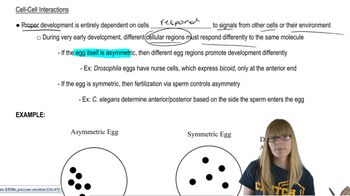Here are the essential concepts you must grasp in order to answer the question correctly.
Meselson–Stahl Experiment
The Meselson–Stahl experiment, conducted in 1958, was a pivotal study that demonstrated the semi-conservative nature of DNA replication. By using isotopes of nitrogen, specifically ¹⁵N and ¹⁴N, the researchers were able to trace the incorporation of these isotopes into newly synthesized DNA strands, providing clear evidence of how DNA replicates.
Recommended video:
Isotopes and Labeling
Isotopes are variants of a chemical element that have the same number of protons but different numbers of neutrons, resulting in different atomic masses. In the Meselson–Stahl experiment, ¹⁵N, a heavier isotope of nitrogen, was used to label the DNA of bacteria. This labeling allowed scientists to distinguish between old and new DNA strands based on their density during centrifugation.
Recommended video:
Centrifugation and Density Gradient
Centrifugation is a technique that uses rapid spinning to separate components in a mixture based on their density. In the context of the Meselson–Stahl experiment, a density gradient was created using cesium chloride, allowing the researchers to observe the different densities of DNA molecules. This separation was crucial for confirming that DNA replication results in one strand from the original DNA and one newly synthesized strand.
Recommended video:






